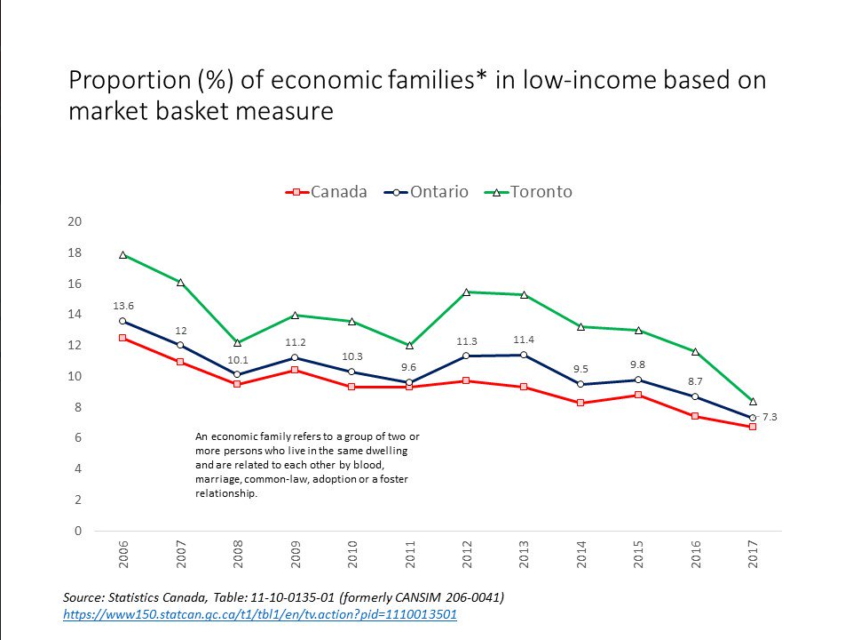Justin Trudeau’s Liberals haven’t had a lot of successes in their term in office, but there is one achievement they can legitimately take some credit for:
Pssst. Can I let you in on a little secret? Keep it under your hat, but — the poverty rate has fallen again. In fact, it’s at a new all-time low. Statistics Canada reports that the percentage of Canadians falling below the official poverty line in 2017 fell to 9.5 per cent, down from 15.6 per cent in 2006. That still leaves much room for improvement. But this is remarkable progress.
Of course, the official measure of poverty, known as the Market Basket Measure, has only been around for a few years. But an earlier, unofficial measure, known as the Low Income Cut Off, goes back much further. It, too, is at an all-time low, after a steady, two decades-long decline. Indeed, at 7.8 per cent, it’s barely half what it was in 1996.
Andrew Coyne continues:
The sources of this amazing success story are not hard to find — and no, it is not quite as simple a matter as replacing the Conservatives with the Liberals. The trendlines on both low and median incomes, I repeat, go back to the mid-1990s: when the economy, after the long recession, began to grow again.
It turns out — who knew — that poverty tends to fall, and incomes to rise, in periods of economic growth, such as we have enjoyed, almost without interruption, since then. Even the 2009 recession, a relatively mild one in Canada, barely made a dent in either trend.
Still, the Liberals deserve some credit for the continuing decline in poverty since they were elected. If the overall rate has dropped appreciably, it has fallen even more among children — especially welcome, given the lasting effects poverty can have on life chances. At nine per cent, it is down a third from just two years ago.
That’s almost certainly due, at least in part, to the Liberals’ first and most significant policy reform: the rationalization of several existing child benefits and credits into a single income-tested Canada Child Benefit, with increased amounts going to low-income families. It turns out — who knew — that if you give people more money, they are less likely to be in poverty.




